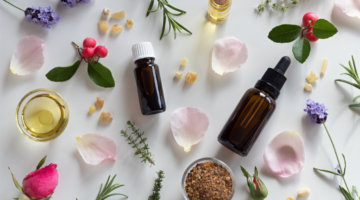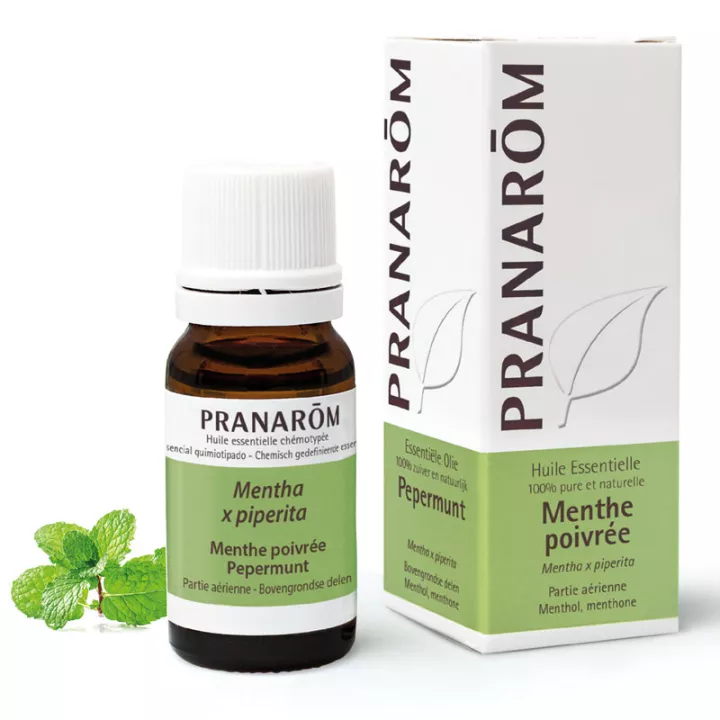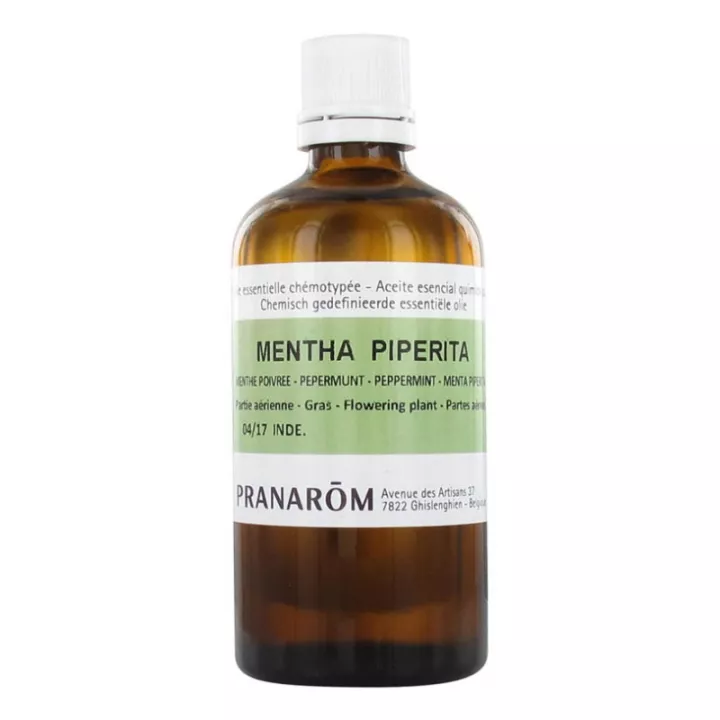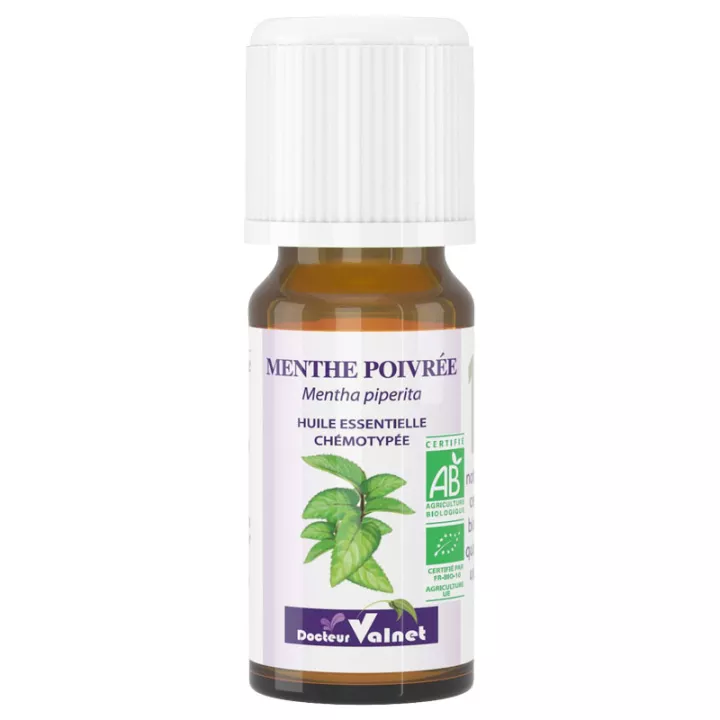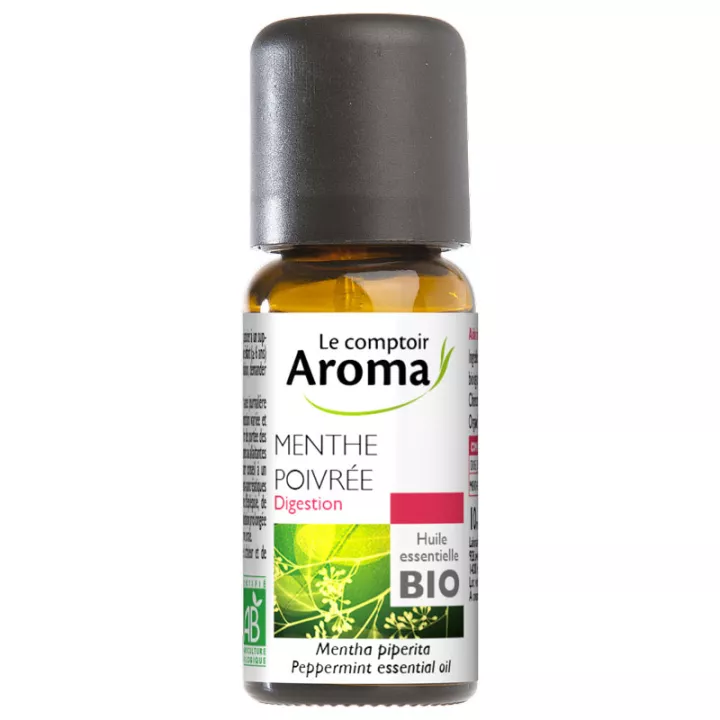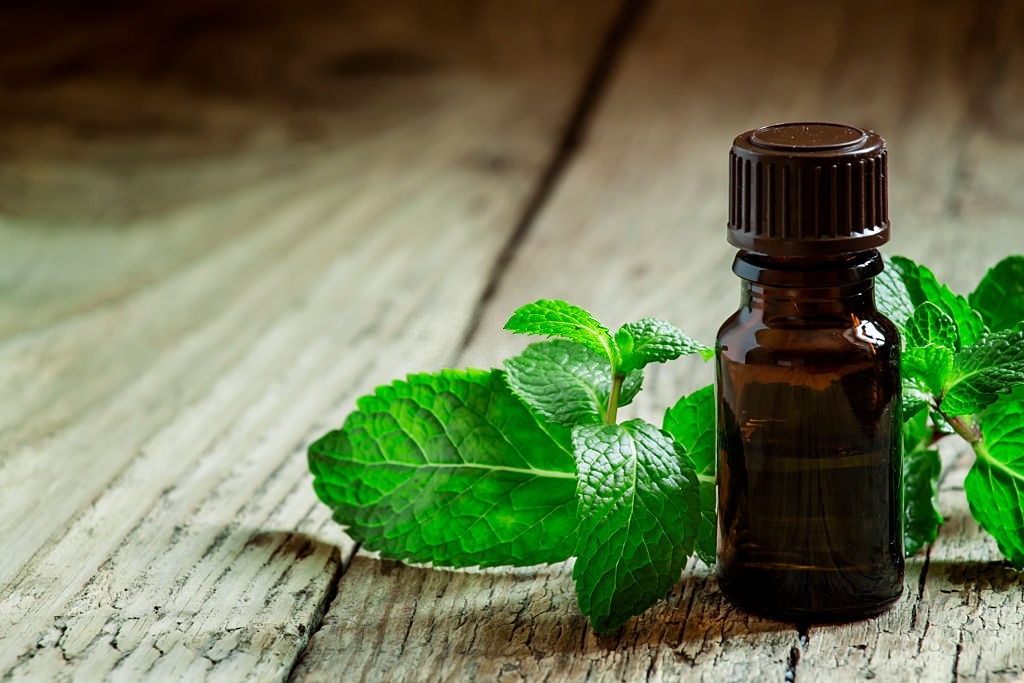What is Pranarom Peppermint essential oil used for?
Peppermintessential oil is a general stimulant and nerve tonic. It is antiseptic, antifungal and anti-herpetic (even acyclovir-resistant). It is also a nasal decongestant, migraine reducer and skin anesthetic.
A hybrid of Mentha aquatica and Mentha spicata, this 80-cm plant is perennial. Stems are quadrangular; leaves are opposite, oval, acute and toothed. It likes cool, clayey, calcareous soil. Distillation takes place in June, just before flowering.
- Anti-vomiting and stomachic.
- Analgesic.
- General stimulant and neurotonic.
- Useful after antibiotic treatment.
Its effectiveness is rapid: used properly, it quickly brings a feeling of relief and well-being. Thanks to its high menthol content, Peppermint essential oil has a highly refreshing action and remarkable analgesic properties, making it a first choice in the family or sportsman's first-aid kit: Peppermint is an essential oil for painful shocks, blows or stings. It is also used to relieve headaches and migraines, improve digestion, unblock the nose, counteract nausea and combat bad breath.
How to use this essential oil
For headaches, apply one drop of peppermint essential oil to each temple and massage gently. Do not apply too close to the eyes.
Whatever you use Peppermint essential oil for, it's best to dilute it in a vegetable oil to limit the risk of skin irritation, reduce the heady scent and avoid too strong a cold effect.
Oral: *** Skin: ** Diffusion:** (low dose; harsh on eyes)
- Oral route (digestive system): 1 drop on a neutral tablet, taken 3 times a day for 7 days.
- Cutaneous route (headaches) : Pure or diluted in a vegetable oil, massage 2 drops of Peppermint essential oil 3 times a day.
- Headaches (adults), more complete formula: 1 drop of Peppermint essential oil + 1 drop of Red Myrtle essential oil, 1 drop of this mixture applied locally to the painful area.
It is also a tonic for atmospheric diffusion: 5% Peppermint essential oil with 95% Lemon essential oil.
Precautions for use
- Neurotoxic in high doses
- Do not use topically on children, especially near the nose and respiratory tract, as it may cause spasms of the larynx or bronchi, leading to choking and convulsions.
- Not recommended for children, pregnant or breast-feeding women
- Possible allergy to menthol
- 2g of peppermint essential oil may lead to abolition of reflexes and bulbar paralysis
- High doses may cause headaches, bradycardia, tremors, ataxia and insomnia.
- Do not use in case of cardiovascular disorders, as it is a vasodilator
- Not to be taken orally at the same time as homeopathic treatment
- Not recommended for epileptics
- Not for use by asthmatics without the advice of an allergist.
FAQ - Your questions about Pranarôm Peppermint Essential Oil
Can it be used for migraines?
Yes, one drop diluted in a vegetable oil and applied to the temples and nape of the neck helps relieve headaches.
2. Is it effective for digestion?
Yes, it is recognized for its anti-swelling and anti-nausea action, ideal after a hearty meal.
3. Can it be used in cooking?
Yes, but in extreme moderation: just 1 drop is enough to flavor an infusion, dessert or dish.
4. Is this oil not recommended for certain people?
Yes, it is forbidden for pregnant women, children under 6 and people suffering from high blood pressure or epilepsy.
5. Can it be applied to the skin?
Yes, but always diluted, as its mentholated effect can cause irritation.
What is its composition?
Peppermint essential oil contains monoterpene alcohols, monoterpene ketones and monoterpene esters.
| Distilled part |
aerial parts |
| Chemotype |
menthol, menthone |
| Distillation |
low-pressure steam distillation |
| Origin |
Italy |
| Yield |
170 kg for 1 kg of EO
|
Presentation
Pranarôm peppermint essential oil comes in a 10ml or 100ml bottle.
We also recommend peppermint essential oil for headaches, nausea and motion sickness.
